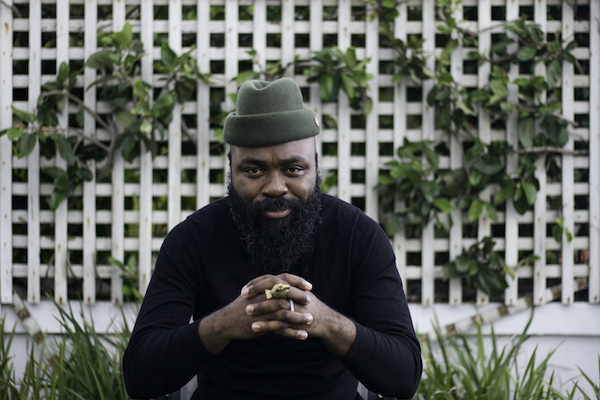Dec 9, 2025 12:28 PM
In Memoriam: Gordon Goodwin, 1954–2025
Gordon Goodwin, an award-winning saxophonist, pianist, bandleader, composer and arranger, died Dec. 8 in Los Angeles.…

Blue Note Africa will launch this spring with the May 27 release of South African pianist-composer Nduduzo Makhathini’s new album In The Spirit Of Ntu.
(Photo: Hugh Mdlalose)Blue Note Records and Universal Music Group Africa have announced the creation of Blue Note Africa, a new imprint dedicated to signing jazz artists from across the African continent, bringing them to a global audience and promoting a cultural exchange of ideas that transcends borders. Blue Note Africa will launch this spring with the May 27 release of South African pianist-composer Nduduzo Makhathini’s new album In The Spirit Of Ntu.
“Blue Note has stood the test of time by continuing to adapt but keeping its focus on discovering and introducing jazz talent to the world,” said Sipho Dlamini, CEO of Universal Music Africa. “The opportunity to create Blue Note Africa and provide a channel for African jazz talent to have a home in the U.S., with a dedicated and passionate team led by a legend in his own right, Don Was, is very exciting. We can now walk the African jazz journey, from Cape to Cairo to California.”
“African music has been a major creative tributary for nearly every album in Blue Note’s extensive catalog,” said Blue Note President Don Was. “So it’s a great honor for us to partner with Sipho and his talented Universal Music Africa team in this new endeavor. Together, we will shine a global light on the incredible music emanating from Africa today.”
The exchange of ideas between American musicians and African musicians is a thread that runs throughout the entire progression of jazz music to this day. In 1947, the legendary American Jazz drummer and Blue Note artist Art Blakey visited Africa for the first time, a trip that was meant to take a few months but ended up lasting a couple years as Blakey travelled to Nigeria and Ghana. It was an experience that had a profound effect on Blakey, both religiously and musically, and led to a series of Blue Note albums that were deeply influenced by African percussion including Orgy In Rhythm (1957), Holiday For Skins (1958), and The African Beat (1962), the latter of which featured traditional African drummers including Solomon Ilori, who would release his own Blue Note album, African High Life, in 1963.
In the late 1950s, a fertile jazz scene began to develop in South Africa led by the trailblazing band The Jazz Epistles, a group inspired by American jazz groups (including Blakey’s Jazz Messengers) that featured trumpeter Hugh Masekela and pianist Dollar Brand (later known as Abdullah Ibrahim). As the restrictions, censorship and violence of apartheid worsened in the early ’60s, Masekela and Ibrahim left the country and went on to become global ambassadors of South African jazz. But generations of South African jazz musicians also stayed, enduring the hardships of apartheid but managing to create a distinctive and vibrant jazz scene that continues to flourish today.
Pianist McCoy Tyner further explored African-American connections on his late-’60s and early-’70s Blue Note albums with pieces like “African Village,” “Message From The Nile” and “Asante.” In 2008, Beninese guitarist Lionel Loueke released Karibu, the first of several boundary-pushing Blue Note albums that blended the sounds of both continents.
In 2018, Universal Music Group Africa signed pianist-composer Nduduzo Makhathini, a leader of the current South African jazz scene whose second UMG album, Modes Of Communication: Letters From The Underworlds, was released jointly on Blue Note Records. The album drew wide acclaim across Africa, Europe and the United States, with DownBeat naming Nduduzo among its “25 for the Future,” a short list of jazz artists with the potential to shape the genre. DB

Goodwin was one of the most acclaimed, successful and influential jazz musicians of his generation.
Dec 9, 2025 12:28 PM
Gordon Goodwin, an award-winning saxophonist, pianist, bandleader, composer and arranger, died Dec. 8 in Los Angeles.…

Flea has returned to his first instrument — the trumpet — and assembled a dream band of jazz musicians to record a new album.
Dec 2, 2025 2:01 AM
After a nearly five-decade career as one of his generation’s defining rock bassists, Flea has returned to his first…

Belá Fleck during an interview with Fredrika Whitfield on CNN.
Jan 13, 2026 2:09 PM
The fallout from the renaming of the John F. Kennedy Center for the Performing Arts to include President Donald…

“It’s a pleasure and an honor to interpret the music of Oscar Peterson in his native city,” said Jim Doxas in regard to celebrating the Canadian legend. “He traveled the world, but never forgot Montreal.”
Nov 18, 2025 12:16 PM
In the pantheon of jazz luminaries, few shine as brightly, or swing as hard, as Oscar Peterson. A century ago, a…

Dec 11, 2025 11:00 AM
DownBeat presents a complete list of the 4-, 4½- and 5-star albums from 2025 in one convenient package. It’s a great…